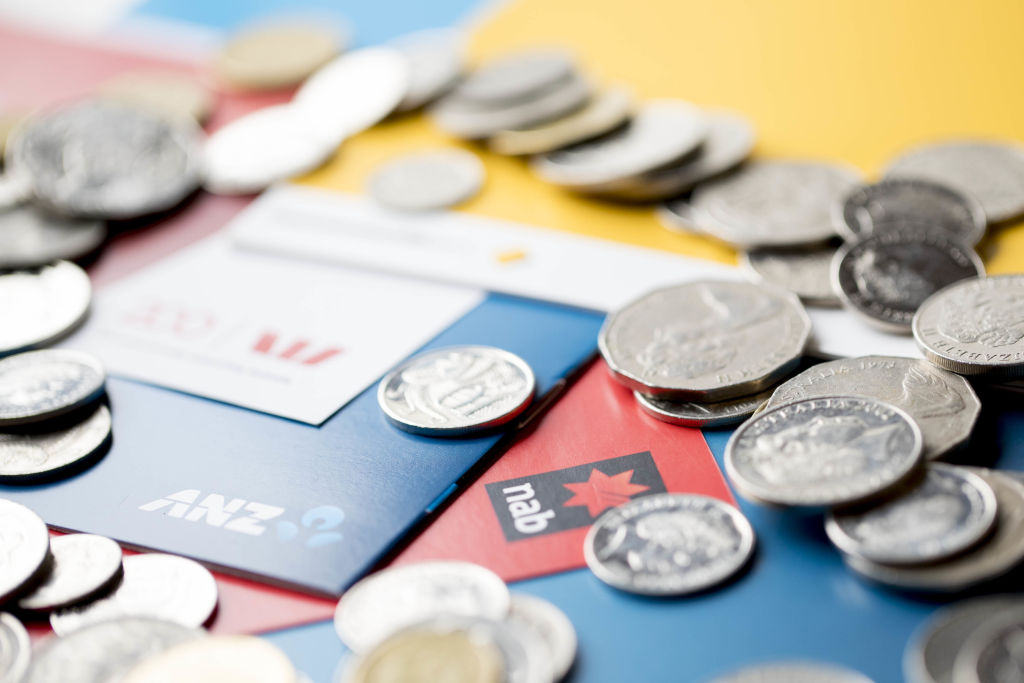Saving for a house deposit? The best interest rates on savings accounts add up

Hopeful first-home buyers are taking a hit to their nest eggs, with interest rate cuts to savings accounts slashing gains made on money in the bank.
NAB announced further rate cuts last week to savings accounts after already dropping rates last year, along with the majority of the banks.
While home borrowers were cheering off the back of three rate cuts in 2019, Finder money expert Bessie Hassan said it was a different story for those saving for a home deposit or relying on savings for income.
“We saw a majority of banks cut savings rates,” she said. “For savers looking to break into the property market or upgrade, it means it’s never been more important to lock in a bigger rate.”
Term deposits have also taken a hit, Ms Hassan added. “Less than a decade ago we were seeing term deposit rates as high as 6 per cent and now the average starts with a two,” she said.

The amount savers can earn varies widely depending on whether a bank offers an attractive introductory interest rate that soon reverts to a smaller figure, or continues to offer the higher rate – perhaps with requirements such as the borrower not making any withdrawals.
NAB’s latest cut takes its iSaver account to a maximum introductory rate of 1.55 per cent, reverting to a standard variable rate of 0.11 per cent after four months. That would equal $72.40 in interest a year based on a $10,000 deposit to which $1000 was added each month, Finder modelling shows.
Those with a Commonwealth Bank NetBank Saver and Westpac eSaver accounts would pocket just over $20 more. By contrast an ANZ Progress Saver would give almost $250 in interest, but borrowers must make one deposit and no withdrawals each month.
| Savings accounts – Big banks | ||||
| Savings account | Maximum variable rate p.a. | Standard variable rate p.a. | Bonus interest p.a. | Interest earned in 12 months |
| NAB iSaver | 1.55%* | 0.11% | 1.44% | $72.40 |
| Commonwealth Bank NetBank Saver | 1.65%** | 0.10% | 1.55% | $93.26 |
| Westpac eSaver | 1.66%** | 0.10% | 1.56% | $93.76 |
| ANZ Progress Saver | 1.60% | 0.01% | 1.59% | $249.57 |
| Source: Finder. Note: Interest based on $10,000 deposit with $1,000 a month deposit. *For four months, then reverts to standard rate. **Five months, then reverts to standard rate. | ||||
“You’d make less than $130 in 12 months with the big four on average, compared to $300 on average with the top four smaller banks,” Ms Hassan said. “At the 2.25 per cent rate [announced by new neobank Xinja last week] you would be making $352 a year … even a marginally better rate can see you pocket a lot more in the long run.”
Ms Hassan said savers needed to look beyond the big four banks to smaller lenders and neobanks to make savings work harder.
She added account hopping was on the rise in the lower interest rate environment, but warned savers looking to make the most of introductory rates and bonus criteria to check the conditions and take a long-term view.
“Often accounts offer good interest rates for the honeymoon period but then they revert to next to nothing afterwards,” she said.
| Source: Finder. Note: Interest based on $10,000 deposit with $1,000 a month deposit | ||||
| Top high-interest savings accounts | ||||
| Savings Account | Maximum variable rate p.a. | Standard variable rate p.a. | Bonus interest p.a. | Interest earned in 12 months |
| UBank USaver | 2.10% | 1.04% | 1.06% | $328.21 |
| Suncorp Growth Saver Account | 1.95% | 0.20% | 1.75% | $304.59 |
| Bankwest Hero Saver | 1.85% | 0.01% | 1.84% | $288.85 |
| HSBC Flexi Saver Account | 1.75% | 0.40% | 1.35% | $273.13 |
With prices in the nation’s biggest property markets of Sydney and Melbourne back on the rise, rate cuts could make it ever harder for those struggling to keep up with the price growth.
Canstar group executive of financial services Steve Mickenbecker said low rates generally meant low inflation, but property price growth had outstripped everything else.
“Savers are going to get no reasonable free kick from interest … whatever they need in a deposit they’ll have to save, they’ve got to do all the heavy lifting.”
But just because rates are low does not mean savers have little to gain by switching to higher interest saving accounts – virtually all of which are with newer banks, Mr Mickenbecker says. He added term deposits could still offer reasonable rates, but savers needed to make sure they were aware of the terms before locking away funds.
“The smaller new banks have to go out there with a bit of a splash, will they be able to maintain it? Who knows. But the reality is you can take advantage of it now and then change banks if needed later,” he said, noting the government guarantees saving up to $250,000 with authorised deposit-taking institutions.
| Source: Canstar.com.au. Based on flexible savings accounts available for the deposit amount of $10,000. Flexible Savings Accounts include those where no conditional bonus rate is applicable. Additional Promotional Bonus rates may be applicable, however have been excluded. | ||
| Top 5 Flexible Savings Accounts | ||
| Company | Account | Base Rate |
| Xinja | Stash | 2.25% |
| Bank of Sydney | BOS Saver | 1.65% |
| MOVE Bank | Express Saver | 1.50% |
| AMP Bank | Saver Account | 1.40% |
| Easy Street Financial Services | Easy Savings Online Account | 1.40% |
Jodi McKeown, associate director of ProSolution Private Clients, said clients had become more interested in diversifying their savings as rates dropped.
“We don’t see many people just building up their funds and putting them in a savings account any more, unless they’re saving for something in particular [like a home deposit],” she said, noting others increasingly put surplus cash into superannuation, property or shares.
Ms McKeown said shares were a riskier approach, particularly for those looking to purchase a home in the short to medium term.
“Buying and selling shares within that timeframe doesn’t make sense in most occasions. We would suggest to put the funds into an online savings account [or one of the smaller banks].”
Mr Mickenbecker agreed, noting while the stock market was a great place to park long-term savings, it posed a significant risk for short-term saving goals.
“When saving for a home you have a timeframe in mind, let’s say it’s three years and you’re unlucky and 2.5 years in there is a significant downturn in the market … you could lose 20 per cent,” he said.
‘I would never say [investing in shares is] gambling, but relying upon the timing starts to look like you’re talking a bit of a gamble with your savings,” he added.
Mr Mickenbecker said alternative avenues such as investing in peer-to-peer lenders or bond portfolios came with a greater degree of risk better suited for those with a portfolio of investments.
For those savers set on turning to shares, Ms Hassan said it was important that they did their homework, started with blue-chip companies and industries they knew, kept up to date with the economy and diversified their portfolio to minimise risk.
We recommend
We thought you might like
States
Capital Cities
Capital Cities - Rentals
Popular Areas
Allhomes
More









